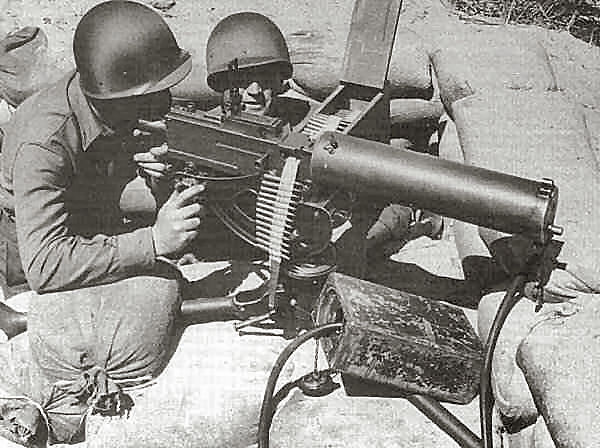The M1917A1 was designated as a Heavy Machine Gun for a very good reason: it was heavy! It was not a weapon easily used in fluid combat or assault. However, the weight of this water-cooled weapon also gave it great stability which, with its capability of sustained volume of fire, made it an excellent defensive weapon.
The heavy was also very reliable. The anti-freeze in its coolant made it dependable even in the intense cold, as in the Chosin Reservoir battles. For stopping massed, or wide-spread infantry assault, the .30 heavy was one of the most effective weapons the infantry had during the Korean war.
The Chinese also used water cooled heavy MGs with effect. Firing their eerie green tracers at night to mark targets for their infantry, and soften up the targets themselves, the old-fashioned, wheeled Chinese MGs, with their metal shield for the gunners, was an ideal support. Doubtless also using anti-freeze, the Chinese water-cooled MGs were probably their most effective weapon during the first year of the Korean war. I won't qualify this with the term 'infantry weapon', because the Chinese army was all infantry, at least during the first few months of their crushing entry into the Korean war.
American forces used the light and heavy machine guns mostly at a few hundred yards or less, contrary to their design concepts. This was the nature of the battles our company and platoon sized forces faced. The Chinese used them at greater distances but, at least in the early phases of the Korean war, used them sparingly at these distances. Probably because of the difficulty of transporting ammunition over long distances on foot, which was often their only available method.
The North Korean armies, on the other hand, were well supplied with the Maxim heavy machine guns by the USSR, and used them in large quantities in the Pusan Perimeter battles. The NK, well trained and largely veterans of China's civil war, would site these weapons at long distances to place grazing fire on slopes we were attacking. Beyond hearing range, using smokeless powder, sighted in with great professional accuracy, the first inkling our troops would have that they were under aimed fire would be when their comrades' bodies and faces were suddenly torn and shattered.


